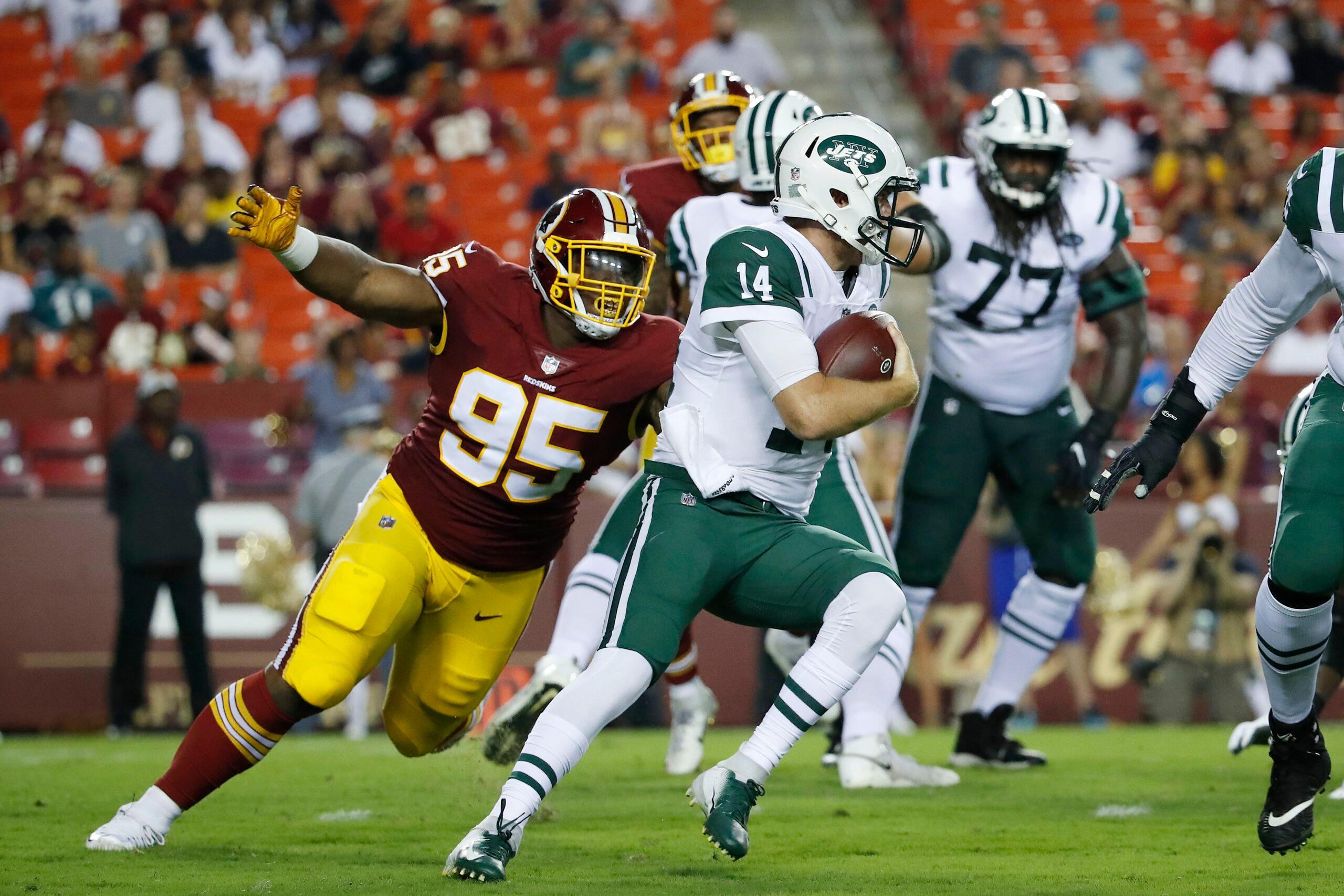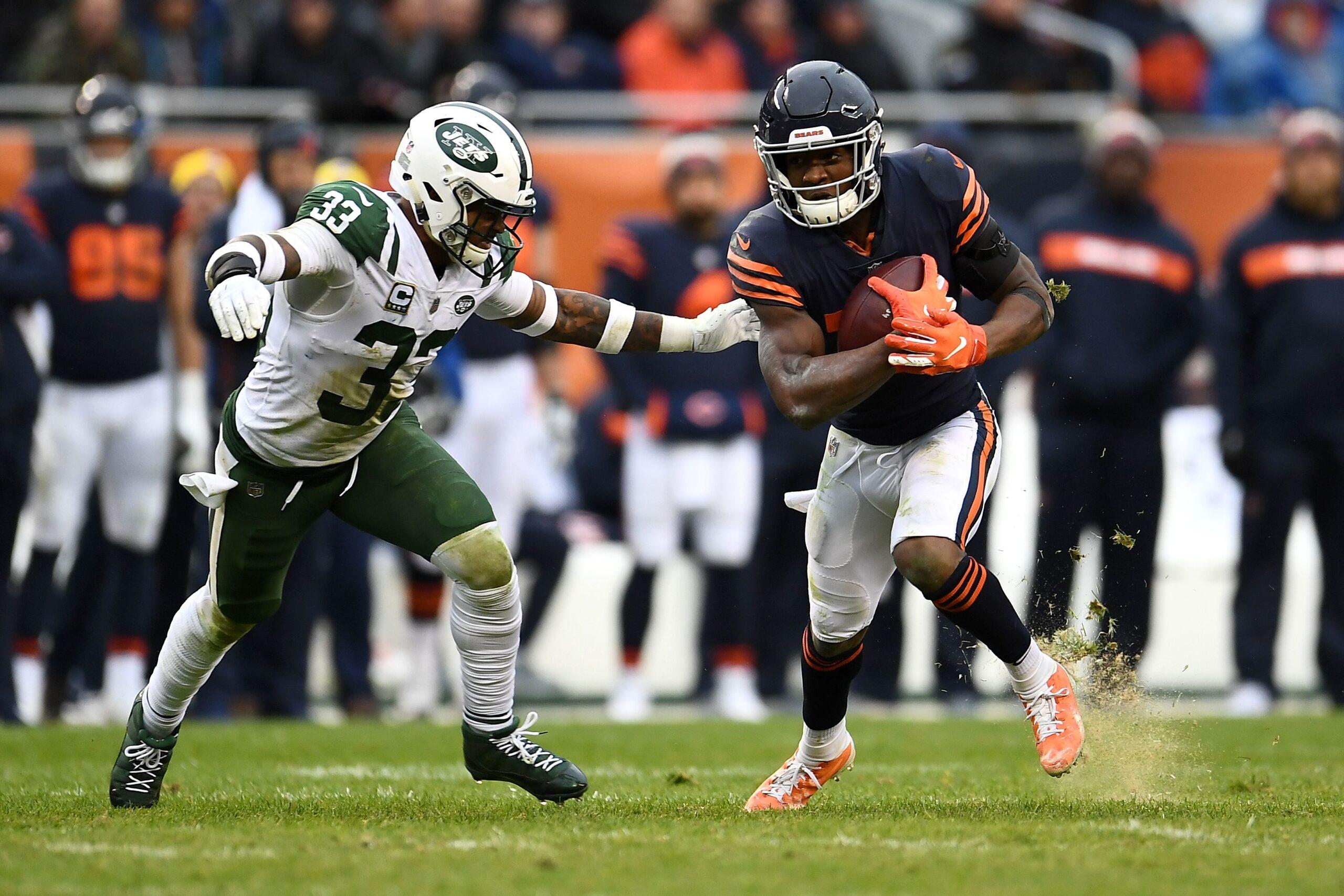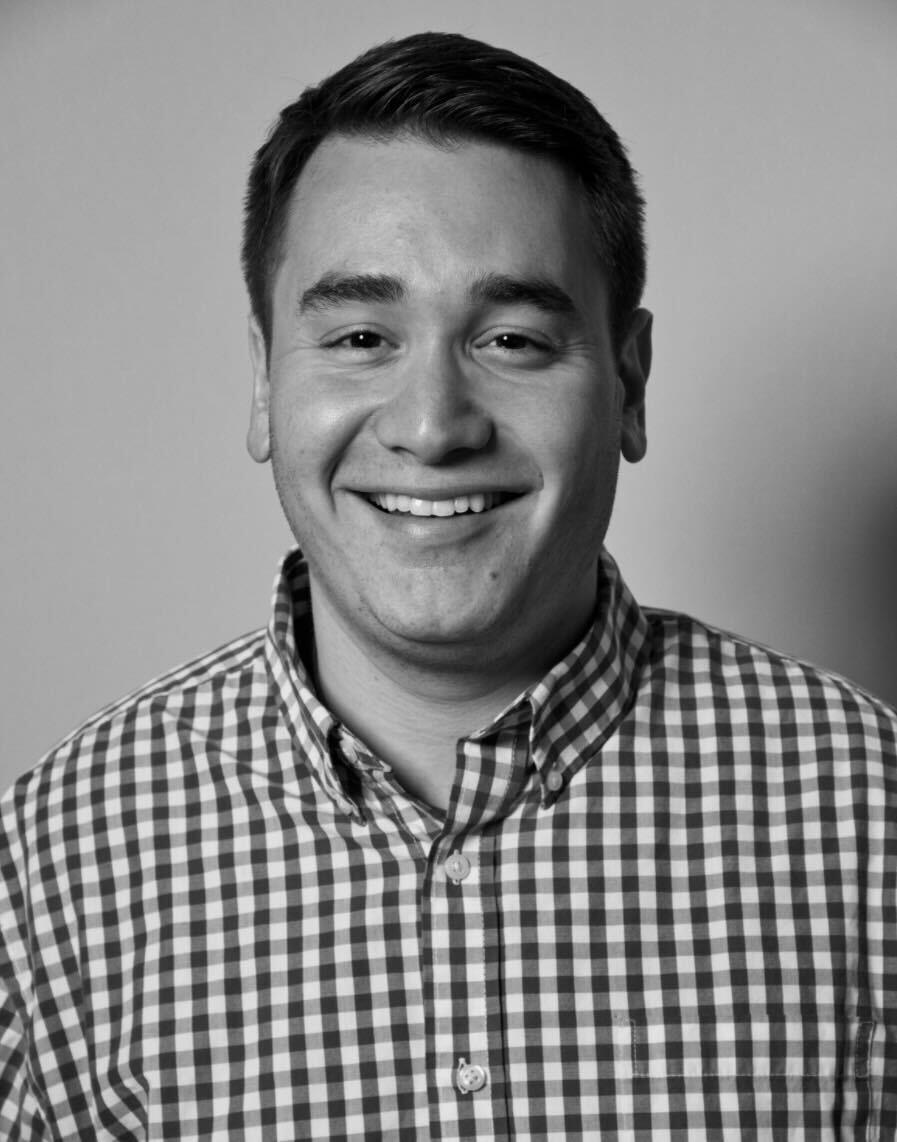It’s that time of year, when some NFL teams have started looking toward next season. As each club is eliminated, The Ringer will examine what went right, what went wrong, and where the franchise could go from here. Today it’s the New York Jets, who saw their playoff dreams mathematically snuffed with a Titans victory on Thursday night.
What Went Right
“Last week they asked me for a silver lining,” Jets receiver Quincy Enunwa told reporters on Sunday. “We’re putting Jason Myers in the Pro Bowl.”
In case you’re unfamiliar with the team, Myers is New York’s kicker — so that pretty aptly sums up how tough this year has been in Jets Land. Still, despite this grotesque season, there have bright spots amid the darkness.
Sam Darnold, the team’s 2018 first-round draft pick and future franchise passer, is still the youngest starting quarterback in the NFL, and there were plenty of moments this season when he looked like a truly viable option under center. Second-year player Jamal Adams has emerged as an elite safety at just 23 and is already a young leader on the team; after years of head coach Todd Bowles choosing captains week-to-week instead of for the full year, Adams was one of five players given season-long captain honors before Week 1. Rookie tight end Chris Herndon has been a surprisingly strong contributor after being drafted in the fourth round of April’s draft. And, yes, Myers is second in the league in made field goals, converting 28 of 30 attempts, including a league-leading six makes from 50-plus yards. Sometimes it’s the little things.

What Went Wrong
Jets fans are used to the team being bad, but they aren’t used to feeling optimistic. So when they came into 2018 with hope in their hearts instead of dread, only to have that hope suffocated by another inept season, it was especially traumatic.
The Jets traded three second-round picks (two in 2018 and another in 2019) to move up three spots to third overall, where they ended up taking Darnold. He was expected to have some growing pains in his rookie year, but those pains quickly outnumbered the gains; he’s averaging just 215 passing yards per game and leads the league in interceptions even though he missed three games with a foot injury. Now, the Jets are 3–9, they’re on pace for an even higher draft pick than they earned last year, and Bowles is the odds-on favorite to be the next NFL head coach fired this season. But it wasn’t all his fault.
First-year offensive coordinator Jeremy Bates’s offense has failed to muster more than one touchdown in five consecutive games, which is a franchise record. Darnold has been pressured on 36.3 percent of his dropbacks this season, the sixth-highest figure in football and the second highest of any rookie QB after Josh Rosen. The receiving corps is among the most disappointing in the league (Quincy Enunwa leads the team with just 427 receiving yards), and the run game has not been strong enough to take any pressure off Darnold. The Jets rank 22nd in yards per carry (4.2), but if you take their Week 4 dismantling of the Denver Broncos — when they romped for 323 rushing yards on 38 attempts — out of the equation and they fall to 3.6 yards per carry, which would be last. By the time Darnold was sidelined in Week 10, his absence felt almost merciful. (He’s expected to return this week against the Bills.)
The offense is bad, but Bowles’s failure on defense has been especially disappointing. He translated his two seasons coordinating Arizona’s defense into a strong 2015 Jets unit that ranked fifth in defensive DVOA. But the defense has stagnated, falling to 21st, 18th, and 18th in the three years since. The Trumaine Johnson signing this March (five years for $45 million guaranteed, worth up to $72.5 million) was a whiff, as Johnson is the league’s second-highest-paid cornerback yet ranks 27th in Pro Football Focus’s cornerback coverage grades. Defensive tackle Leonard Williams has been fine, but not good enough to warrant the no. 6 pick that the Jets spent on him in 2015. Adams has been the lone bright spot on defense, but he’s also become an avatar for the fans’ disgust.

“I’m sick of losing,” Adams told ESPN’s Rich Cimini after the Jets fell to the Dolphins in November. “Honestly, I’m sick of losing. I’m fed up with losing. … It pisses me off every time. I’m not a loser. I want to get back on the winning track.”
Worst of all, Myers is losing the Pro Bowl voting to Baltimore’s Justin Tucker.
Free Agency
The real question for New York this offseason won’t be who’s leaving, but who the team can bring in. The Jets are projected to have more than $100 million in cap space in 2019, the second-highest figure in the league. That’s a tabula rasa to reinvent (or re-screw up) a moribund roster. The most Jetsy thing imaginable would be to give running back Le’Veon Bell a massive contract when he hits free agency (and he would be the perfect Twitter companion for Adams), but the sleeper option would be a megadeal for either Houston’s Jadeveon Clowney or Kansas City’s Dee Ford, both of whom could hit the open market in March if they aren’t franchise-tagged. The Jets have needed pass-rushing help for forever, so going after Clowney or Ford seems natural. Clowney said in September that he’ll be looking for Aaron Donald– or Khalil Mack–type money this offseason, and the Jets are one of the few teams with both the cap space to pay him and a front office desperate enough to try.
Outside of megadeals, the Jets could also make incremental upgrades at multiple positions. Receivers Enunwa and Jermaine Kearse will both be free agents, and though Enunwa has established a rapport with Darnold, it wouldn’t be surprising to see either leave. On the other side of the ball, veteran cornerbacks Morris Claiborne and Buster Skrine are essentially replacement-level players, making them prime candidates to let walk in free agency. New York’s most notable free agent is Josh McCown, the league’s most expensive quarterbacks coach. The team may decide to retain him to give Darnold some stability between coaching staffs, or at least more tips on how to style his hair.
Draft Targets
When a team’s roster is as hollow as New York’s, there is no one specific area to target in the draft. Instead, the Jets should overhaul their approach to the draft. In November, Over the Cap, a research website that studies the NFL’s salary cap, studied all NFL draft picks since 2015 and identified which teams had the most success with players staying in the league. The Jets ranked 31st among the 32 teams.
The study’s time range perfectly coincides with general manager Mike Maccagnan’s tenure’s in New York, which is doubly painful because Maccagnan’s background is in scouting. Over the Cap showed that the Jets have hit on their first-rounders, but only a third of the second-rounders they picked in those years are still in the league, a far cry from the NFL average of 92 percent (not to mention that Christian Hackenberg may go down as one of the worst second-round picks of all time). And it doesn’t get much better further down the list. Only half of the third- or fourth-rounders Maccagnan drafted are still on NFL rosters, while the league average in that span is north of 80 percent.
Plenty of teams have trouble identifying NFL-caliber starters in the draft, but it’s an entirely different problem when a team has trouble identifying NFL-caliber players. Bowles is almost certainly going to get fired this year, but unless the team also moves on from Maccagnan, or decides to overhaul its draft process, it’s unlikely much will change.
